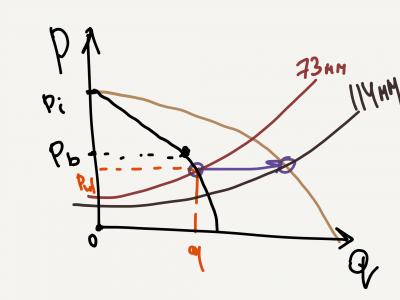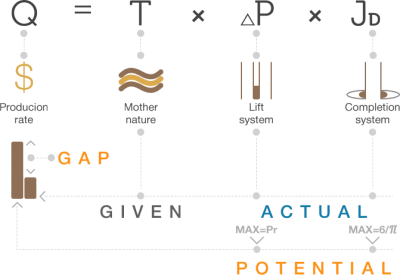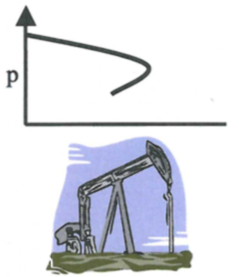Difference between revisions of "Well Nodal Analysis"
(→Well Nodal Analysis) |
(→Well Nodal Analysis) |
||
| Line 2: | Line 2: | ||
[[File:Well Nodal Analysis.png|thumb|right|400px| Well Nodal Analysis]] | [[File:Well Nodal Analysis.png|thumb|right|400px| Well Nodal Analysis]] | ||
| − | [[Well Nodal Analysis]] is the fundamental [[Petroleum Engineering|petroleum engineering]] technique published in 1979 by Joe Mach <ref name=JoeMach/>. | + | [[Well Nodal Analysis]] is the fundamental [[Petroleum Engineering|petroleum engineering]] technique published in '''1979''' by Joe Mach <ref name=JoeMach/>. |
[[Petroleum Engineering]] is a process of maximizing oil and gas production. | [[Petroleum Engineering]] is a process of maximizing oil and gas production. | ||
Revision as of 15:44, 28 May 2020
Contents
Well Nodal Analysis
Well Nodal Analysis is the fundamental petroleum engineering technique published in 1979 by Joe Mach [1].
Petroleum Engineering is a process of maximizing oil and gas production.
The oil and gas companies apply Petroleum Engineering in gas and oilfields to maximize wells and reservoirs production by identifying and closing performance gaps by Gap Analysis.
Petroleum Engineering allows to produce gas and oil wells and reservoirs at their potential in a most economical way while achieving maximum recovery.
New Petroleum Engineering Workflow
- Assess the current gas for oilfield performance. What is the current oil and gas production? Get organized with the available oil and gas production data.
- Calculate the Production Potential and identify the performance gaps in a form of Enhancement List.
- Close the performance gaps by executing identified Enhancements.
- Track the benefits achieved with the Enhancement Tracking.
Such a workflow can be applied both on a well level and on a oilfield pattern level. The petroleum engineer task is to keep wells at potential and patterns balanced while management should be held accountable that the prescribed actions are implemented in a timely manner[2].
Routine execution of described Petroleum Engineering Workflow results in more production, improved recovery and increased earnings.
Petroleum Engineering Technology
- Darcy's law
- Nodal Analysis
- Artificial Lift, especially Electrical Submersible Pumps
- Hydraulic fracturing
- Waterflooding
Petroleum Engineering Technology allows achieving Production Potential, which is maximum drawdown in the Lift System and maximum well's productivity index in the Completion System.
Oil and Gas production optimization challenges
The ideal, of producing and recovering at potential, is rarely obtained in practice. Reasons for this vary from company to company, but more often than not, the reason is well potentials are not known and therefore not managed. Introducing petroleum engineering workflow of maximizing oil and gas production in such oil and gas companies will usually face a resistance in a form of excuses why not to increase production. Below are top 10.
See also
References
- ↑ Cite error: Invalid
<ref>tag; no text was provided for refs namedJoeMach - ↑
Wolcott, Don (2009). Applied Waterflood Field Development
 . Houston: Energy Tribune Publishing Inc.
. Houston: Energy Tribune Publishing Inc.



